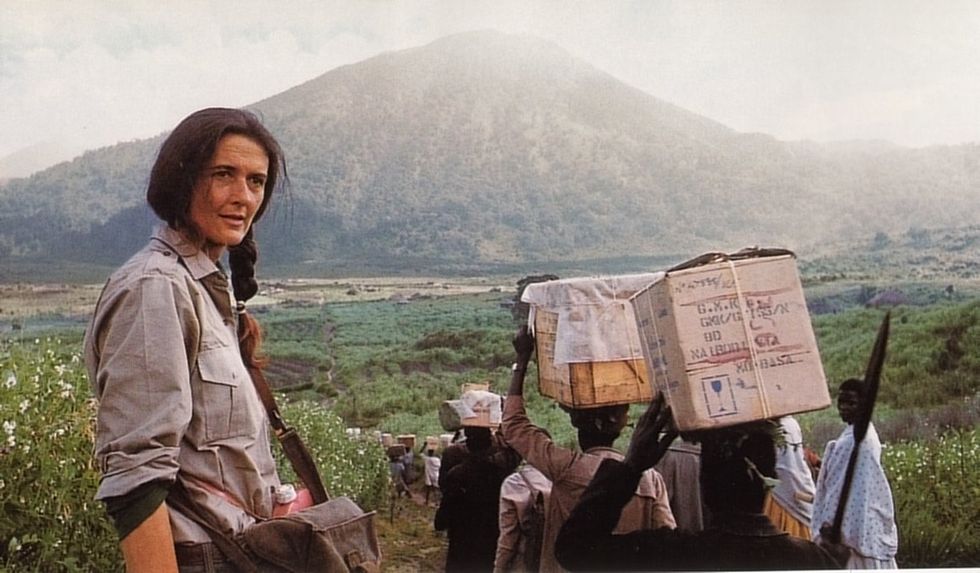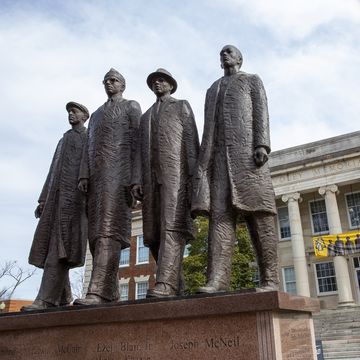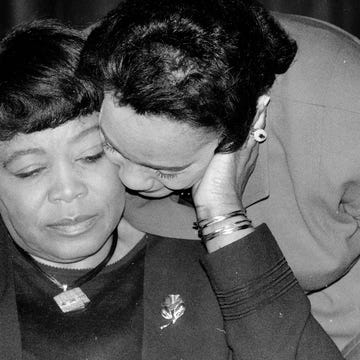Dr. Dian Fossey would have reached her 84th birthday on Jan, 16, 2016. Though she was killed trying to save her beloved mountain gorillas on Dec. 26, 1985, it is heartening to remember how much she was able to accomplish and how her work studying and saving gorillas, now carried on by the Dian Fossey Gorilla Fund, has endured, expanded and become one of conservation’s great success stories.
Many aspects of Dian Fossey’s life were interesting, and her work left us with an unusual legacy as well. Here are some fascinating facts about Fossey, her work, and her beloved gorillas, from the staff of the Dian Fossey Gorilla Fund.
1. Extinction or expansion?
Based on her own work and observations, Fossey felt that the mountain gorilla could become extinct by the end of the century — the last century, of course. A count made during the 1980s estimated there were only about 250 left in the Virunga mountains. But, luckily, Fossey turned out to be wrong about this. Instead, her own work led to decades of intensive protection, which the Dian Fossey Gorilla Fund now carries out every day. And, the gorilla numbers are now up to 480 in this same area, as of a 2010 census. A new census is currently underway. However, this is a complex issue because the forest habitat where this population lives has not increased, so more gorillas are sharing a smaller area. Their future is still precarious.
2. Dian Fossey’s gorillas still with us today
A few of the gorillas that were first seen (at birth) and named by Dian Fossey are still among those that we now monitor every day! Chief among these are dominant silverback Cantsbee and elder female Poppy. Cantsbee is now 37 years old and still leads the largest group of mountain gorillas ever recorded, though his dominance has been challenged a bit recently, by his son, Gicurasi. Cantsbee’s name was coined by Dian Fossey, because she thought that his mother was a male – until “she” gave birth!
Fossey exclaimed, “It can’t be,” which turned into the name Cantsbee. Poppy, 38 years old, is a member of an historic line of distinctive, high-ranking females, beginning with her mother, Effie. Poppy is the oldest mountain gorilla currently known.
3. Sigourney Weaver and Dian Fossey
Actress Sigourney Weaver played Dian Fossey in the 1988 movie based on Fossey’s book, Gorillas in the Mist. Weaver traveled to Rwanda and spent time with the gorillas while making the movie, but her connection with gorilla conservation goes much further than that. After making the movie, she joined the Dian Fossey Gorilla Fund as its honorary chair, a position she still holds today. She’s since been back to Rwanda to see the gorillas and helps the gorilla conservation cause through many events and activities with the Dian Fossey Gorilla Fund and its donors.
4. Fossey’s contentious methods
In trying to protect the gorillas she had come to know and love, Dian Fossey began to employ some “unorthodox” methods for keeping people (especially poachers) away from the gorillas, sometimes running into conflict with locals and authorities. Today, she might be surprised to learn that the Fossey Fund’s 115 staff who protect the mountain gorillas every day are all Rwandans. In addition, in 2012, the first Rwandan director of the Karisoke Research Center (founded by Fossey in 1967) was appointed – on her birthday! So while gorilla protection was a “new” idea in Fossey’s time, it’s a widely accepted concept today, carried out mainly by local people, in conjunction with international partners.
5. Fossey’s Karisoke Research Center and methods still crucial
Fossey came to Africa in 1966 under the auspices of the famed archeologist Dr. Louis Leakey to study gorilla ecology, demography and social organization. To accomplish these goals, she developed a number of pioneering methods that are still used today, including habituating the gorillas to the presence of humans in order to observe them closely, and using drawings of their noses (called “noseprints”) as a definitive identification method. In addition, the Karisoke Research Center that she established — at first as a tent between two mountains — has since been the center of so much gorilla research that most of what is now scientifically known about gorillas is based on studies that were conducted at Karisoke and/or with the Karisoke database. The “gorilla database” is among the largest of its kind for any animal.
6. Dian Fossey’s grave next to favorite gorilla
In the early 1980s, Fossey moved to Ithaca, New York, as a visiting professor at Cornell University, while also working on her book, “Gorillas in the Mist,” which was published in 1983. She then went back to Rwanda but was not there long when, a few weeks before her 54th birthday, she was murdered. Her body was found in her cabin on the morning of December 27, 1985. She had been hit twice on the head and face with a machete. She was buried behind her cabin, in a graveyard that also held some of her deceased gorilla friends, including her favorite, Digit, who was killed by poachers in 1977. She founded the Digit Fund after his death to raise funds for gorilla protection.
After her death, the Digit Fund was renamed the Dian Fossey Gorilla Fund International, and has carried on her work ever since, at a greatly expanded level, including protection for critically endangered Grauer’s gorillas in nearby Democratic Republic of Congo.














